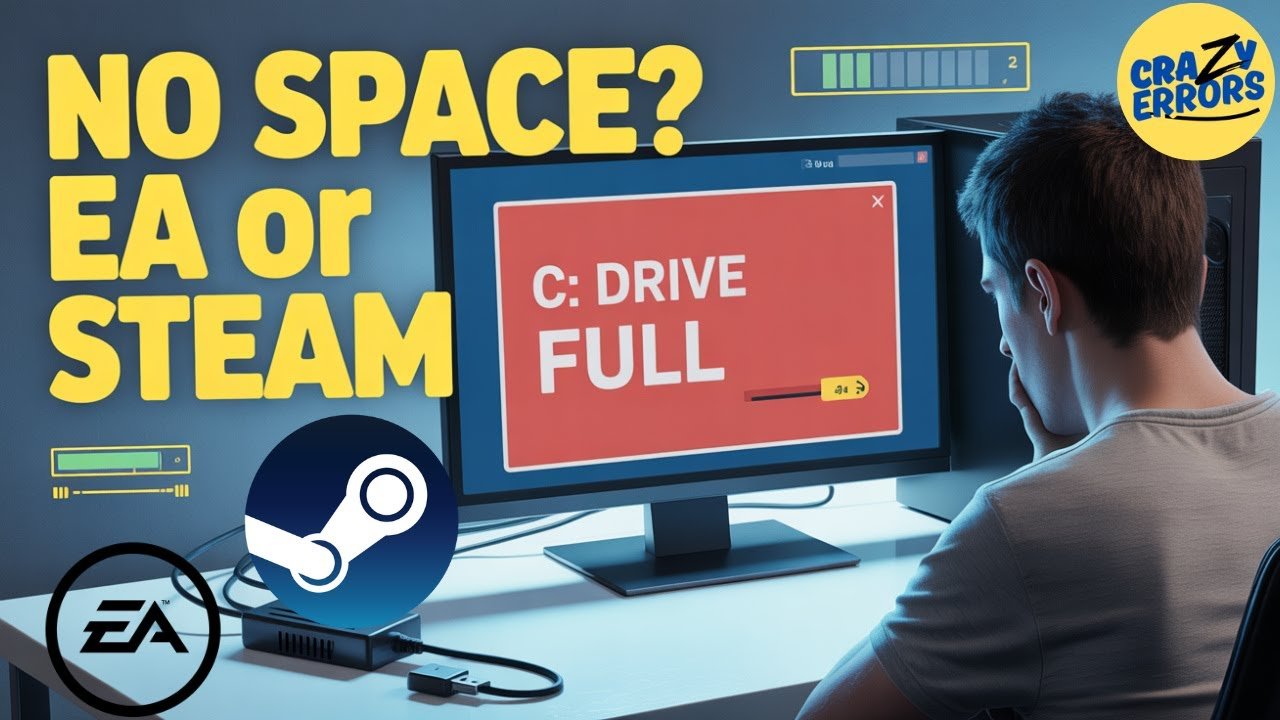Running out of storage space on your main PC drive is a common issue for gamers, especially those with large game libraries. When your primary drive, typically the C: drive, is full, it can slow down your system and make it difficult to install new games. Fortunately, if you have an external hard drive, you can easily offload your games without uninstalling them or losing progress. In this blog post, we’ll walk you through the step-by-step process of moving your Steam games to an external hard drive and setting it up for future game installations.
Why Use an External Hard Drive for Steam Games?
Using an external hard drive for your Steam games offers several benefits:
- Frees Up Space: Moving games to an external drive clears space on your main drive, improving your PC’s performance.
- Portability: External drives allow you to take your game library anywhere, making it easy to play on different systems.
- Cost-Effective Storage: External hard drives, such as a 4TB model, provide ample storage for large game files at a reasonable cost.
If you’re struggling with a full C: drive, an external hard drive is a practical solution to keep your gaming setup running smoothly.
Step-by-Step Guide to Moving Steam Games
Here’s how you can transfer your existing Steam games to an external hard drive without uninstalling them.
Step 1: Connect Your External Hard Drive
- Plug your external hard drive into your computer via a USB port.
- Open This PC (or My Computer) to confirm that your system recognizes the external drive. It should appear as a new drive (e.g., D: or E:).
- Ensure the external drive has enough free space to accommodate your games. A 4TB drive, for example, is more than sufficient for most game libraries.
Step 2: Open Steam and Access Settings
- Launch the Steam application on your computer.
- In the top-left corner, click on the Steam menu.
- From the dropdown menu, select Settings to open the settings window.
Step 3: Add the External Drive to Steam
- In the settings window, locate the Storage tab on the left-hand side and click it.
- You’ll see your default drive (e.g., Local Drive C:), which is likely full or nearly full.
- Click on the dropdown menu next to the current drive and select Add Drive.
- Steam will automatically detect your connected external hard drive. Select it as the new storage location and click Add.
Step 4: Move Existing Games to the External Drive
- Return to the Storage tab in Steam’s settings.
- Select your current drive (e.g., Local Drive C:) to view the list of installed games.
- Choose the game you want to move (e.g., EA Sports Madden NFL 25 or any other title in your library).
- Click the Move button.
- In the dialog box that appears, select your external drive (e.g., D:) as the destination.
- Click Move to begin transferring the game files. This process may take some time, depending on the game’s size and your drive’s speed.
Repeat this process for any additional games you want to move.
Installing New Games on the External Drive
If you’re installing a new game, you can set your external hard drive as the default installation location:
- During the game installation process, Steam will prompt you to choose a storage location.
- From the dropdown menu, select your external drive (e.g., D: or E:).
- Proceed with the installation as usual. The game will install directly to the external drive, saving space on your main drive.
Tips for Managing Your Game Library
- Check Drive Compatibility: Ensure your external hard drive is compatible with your PC and has a fast enough transfer speed (USB 3.0 or higher is recommended for optimal performance).
- Keep Your Drive Connected: Steam requires the external drive to be connected to access games stored on it. Always plug it in before launching Steam.
- Organize Your Library: If you have multiple external drives, consider organizing games by genre or size to make them easier to manage.
- Monitor Drive Health: Regularly check your external drive for errors or corruption to avoid losing game data.
Conclusion
Running out of space on your PC’s main drive doesn’t have to halt your gaming experience. By using an external hard drive, you can easily move your Steam games to free up space without uninstalling them. The process is straightforward—connect your drive, add it to Steam, and move or install games as needed. This solution is perfect for gamers with large libraries or those looking for a portable way to manage their games. Follow the steps outlined above, and you’ll be back to gaming in no time with plenty of storage to spare.
If you found this guide helpful, be sure to share it with fellow gamers and check out more tech tips and tricks to enhance your gaming setup!





